By Richard Stockton | Edited By John Kuroski
Published June 3, 2021
Updated November 29, 2021
Inside the Aktion T4 program, the little-known euthanasia initiative that killed as many as 300,000 disabled people as the Nazis swept across Europe.
Both prior to and during the Holocaust, Nazi authorities executed a massive yet lesser-known program of targeted mass killing aimed at some of the most vulnerable people under their control: the disabled
Starting as a euthanasia program that eliminated disabled infants and children deemed unfit to live and expanding in time to cover disabled adults and the elderly, the program ended in 1941 amid a welter of protests from many quarters of German society.
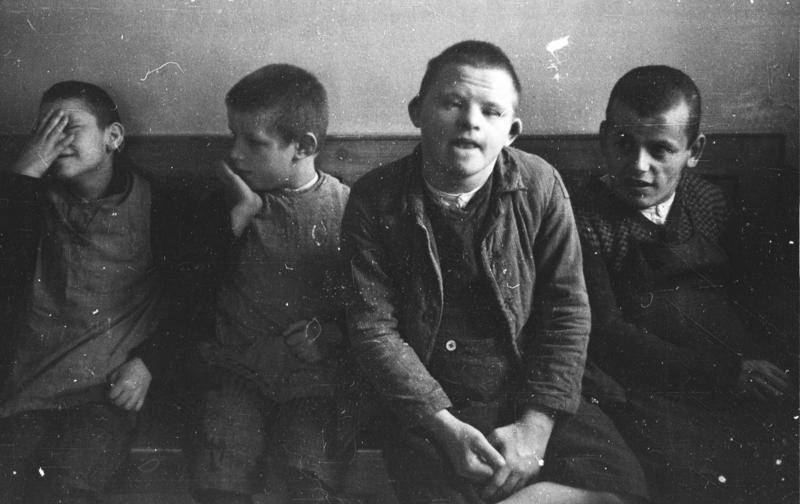
Friedrich Franz Bauer/German Federal Archives via Wikimedia CommonsThis photo, taken by shows several boys with Down Syndrome who are being held at the Heilanstalt Schönbrunn sanatorium near Dachau concentration camp on Feb. 16, 1934. Children like this would soon fall victim to the Aktion T4 euthanasia program.
But the machinery for mass killing that this program developed would not lie idle for long. These victims — as many as 300,000 of them in total — helped the Nazis refine the methods they’d soon use to carry out the Holocaust.
This “rehearsal” for the Final Solution had no official name and was known in Germany only by the address where it was headquartered: 4 Tiergartenstraße, Berlin, which inspired the name Aktion T4.
The Roots Of The Aktion T4 Program

German Federal Archives via Wikimedia CommonsThis Nazi eugenics poster from 1935 illustrates what they believed to be the dangers of allowing so-called genetic undesirables to live, reproduce, and account for a larger percentage of the gene pool than those with desired traits.
The ideological underpinnings of Aktion T4 were apparent in Nazi thinking from the party’s very beginnings. Nazi leaders had long preached the gospel of eugenics, calling for scientific control over Germany’s gene pool with the aim of improving it through state action.
In Mein Kampf, Adolf Hitler himself had spelled out the Nazi notion of “racial hygiene,”writing that Germany “must see to it that only the healthy beget children” using “modern medical means.”
The Nazis believed this would produce Germans fit for the workforce, military service, and so on —
while weeding out all others.
And as soon as the Nazis swept into power in 1933, they implemented laws that mandated sterilization for the physically and mentally disabled. It didn’t take much to become a victim of this program. Most victims were sent to be sterilized due to a vague diagnosis of “feeblemindedness,” while blindness, deafness, epilepsy, and alcoholism accounted for some of the other sterilizations.
All in all, the Nazis forcibly sterilized some 400,000 people. But once the war began in 1939, the Nazis’ plans for the disabled grew even darker.
The Test Case
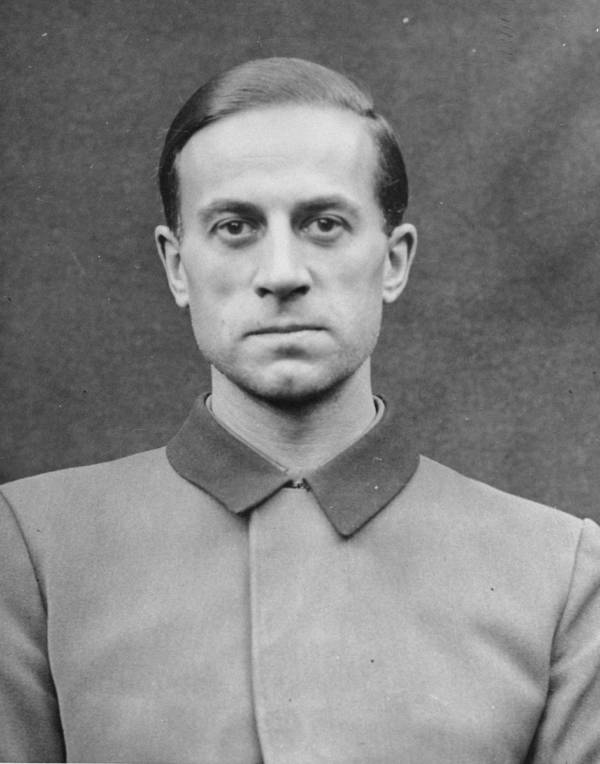
In early 1939, an odd letter arrived at the office of the Nazi Party Chancellery from a German man and Nazi loyalist named Richard Kretschmar. He was trying to contact Hitler directly in hopes of gaining clearance to legally euthanize his own son, Gerhard, who had been born just a few months earlier with severe and incurable physical and mental disabilities including missing limbs, blindness, and convulsions (the original medical records are lost and secondhand accounts vary).
Kretschmar asked Hitler to let them have this “monster” put down. Hitler then sent his own physician, Dr. Karl Brandt, to look into the case. On inspection, Brandt decided the diagnosis had been correct, that he was an “idiot,” and there was no hope for improvement. Thus Gerhard was killed by lethal injection on July 25, 1939. His death certificate stated the cause of death as “heart weakness.”
Having now broken the ice, Hitler and company immediately set into motion a plan that would call for the killing of the physically and mentally disabled in Germany en masse.
Aktion T4 Is Born
A letter authorizing the euthanasia program signed by Adolf Hitler and dated Sept. 1, 1939.

British historians Laurence Rees and Ian Kershaw made the case that the Aktion T4 program’s rapid spread was typical of the chaotic nature of Hitler’s government. In their estimation, Hitler had only to speak about something generally before some ambitious subordinate would almost instantly cobble together a full-scale program from nothing.
The sudden expansion of the Aktion T4 program would seem to exemplify that notion. Within three weeks of the killing of Gerhard Kretschmar, a fully fleshed-out bureaucracy had sprung into existence and was issuing paperwork to doctors and midwives all over Germany.
Hitler had authorized the creation of the Reich Committee for the Scientific Registering of Hereditary and Congenital Illnesses, led by Brandt and Nazi Chief of the Chancellery Philipp Bouhler, among others. These men then put a deadly system into place.

Upon the occasion of every birth, an official would have to fill out a form that included a section for describing physical or other observed defects that the child might have. Three doctors would then review the forms – without any of them actually examining the patient themselves – and mark it with a cross if they thought the child should be killed.
Two-out-of-three crosses were enough to warrant the removal of the child from their home under the guise of helping them get medical attention and then killing them. Aktion T4 was born.
As fitting as it is to imagine the Third Reich spontaneously developing a huge killing program like this overnight, it’s actually more likely that the idea had been floating around for a while prior to the first killing.
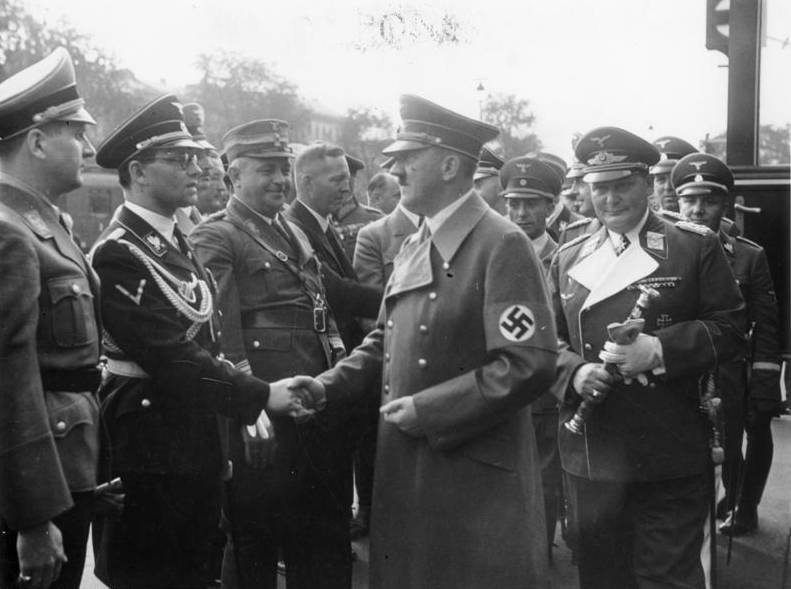
upon the latter’s return to Berlin from the
Munich Conference on October 1, 1938.
German Federal Archives via Wikimedia Commons
In private, Hitler and other top Nazis were prone to complaining that Britain and America (which both had eugenics laws of their own) were far ahead of Germany in their efforts to weed out undesirables via euthanasia. Back in the mid-1930s, Hitler had reportedly told subordinates that he preferred killing to sterilization but that “Such a problem could be more smoothly and easily carried out in war.”
And now, with World War II underway, the time to kill had begun.
The Methods Of Aktion T4
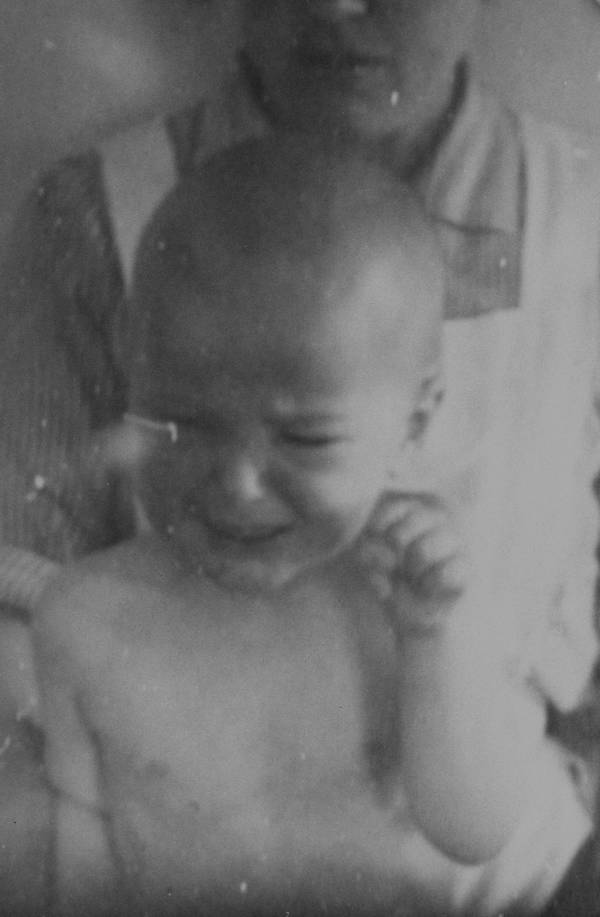
United States Holocaust Memorial Museum, courtesy of National Archives and Records Administration, College Park
Whether or not the killing of Gerhard Kretschmar was part of a larger plan, what followed was a massive operation unlike anything the world had ever seen.
By the summer of 1939, hundreds of infants and young children had been removed from homes and healthcare facilities across Germany and were transported to one of six sites: Bernburg, Brandenburg, Grafeneck, Hadamar, Hartheim, and Sonnenstein. These were working asylums, so there was nothing unusual about new patients arriving and being housed in secure wards at first.
Once there, the children would typically be given fatal doses of luminal or morphine. Sometimes, however, the method of killing wasn’t so gentle.
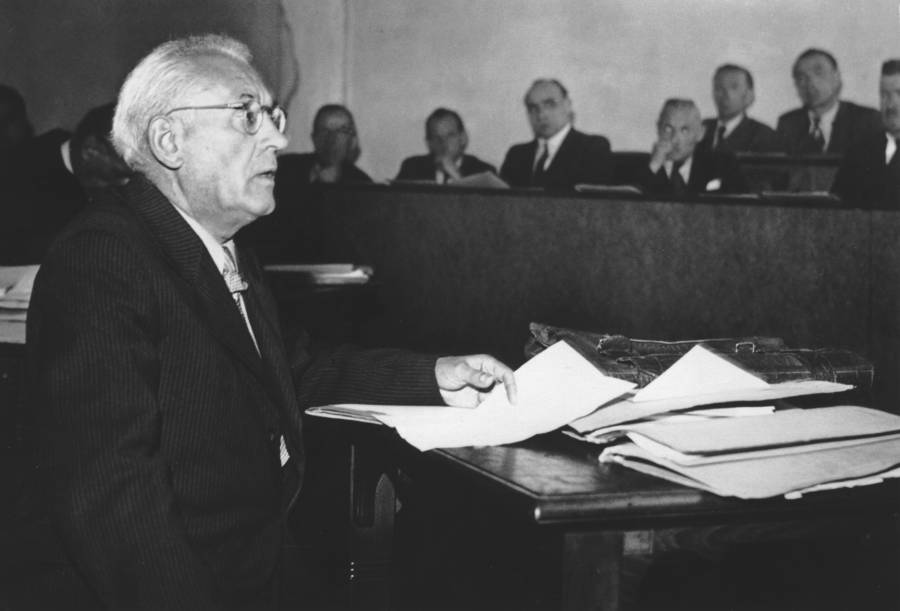
for euthanasia crimes in Munich. 1949.
ullstein bild/ullstein bild via Getty Images
One doctor, Hermann Pfannmüller, made a specialty of gradually starving the children to death. It was, according to him, a more natural and peaceful way to go than a harsh chemical injection that stopped the heart.
In 1940, when his facility in occupied Poland was visited by members of the German press, he hoisted one starving child over his head and proclaimed: “This one will last another two or three days!”
“The image of this fat, grinning man, with the whimpering skeleton in his fleshy hand, surrounded by other starving children, is still clear before my eyes,” one observer from that visit later recalled.
On the same visit, Dr. Pfannmüller complained about getting bad press from “foreign agitators and certain gentlemen from Switzerland,” by which he meant the Red Cross, which had been trying to inspect his hospital for nearly a year at that point.

After the early days of the program, the scope of Aktion T4 was expanded to include older children and adults with disabilities who couldn’t care for themselves. Gradually, the net was cast wider and wider and the methods of killing became more standardized.
Eventually, victims were sent directly to a killing center for “special treatment,” which by that point usually involved carbon monoxide chambers disguised as showers. Credit for inventing the “bath and disinfection” ruse goes to Bouhler himself, who suggested it as a means of keeping the victims quiet until it was too late.
High-ranking Nazis took note of this efficient method of killing and later put it to much wider use.
The Resistance
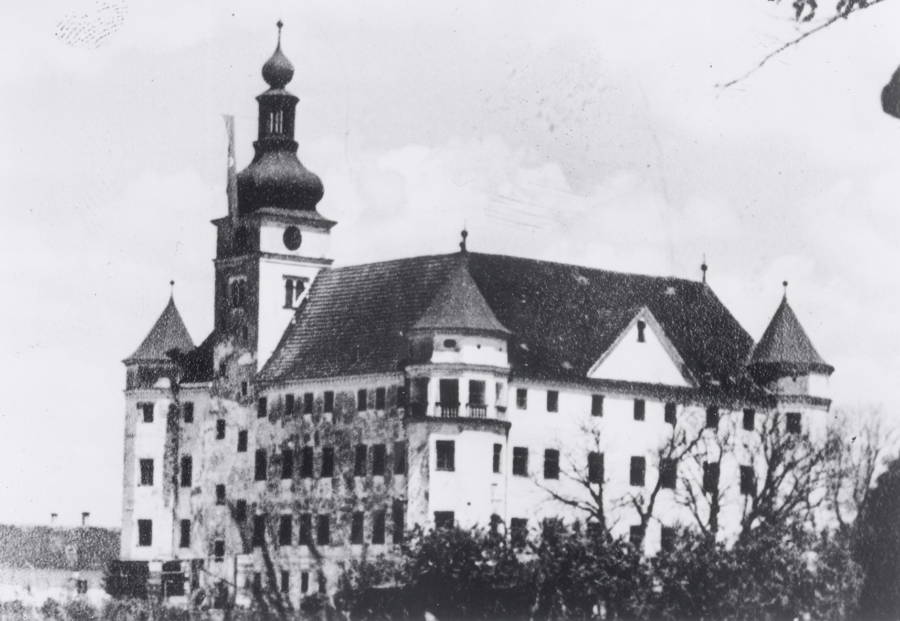
used during Aktion T4
United States Holocaust Memorial Museum, courtesy of National Archives and Records Administration
The Nazi Party had always had a difficult relationship with Germany’s religious community. It would be wrong to say they were forever at odds, but the church represented a separate — and largely independent — power system in the heart of what was fast becoming a dictatorship.
Early on, Catholic resistance to the Nazis led to the newly empowered party agreeing to hand over education of German children in Catholic states to the Church, while individual Protestant denominations gradually made their peace with Hitler. By about 1935, this culture war was dormant.
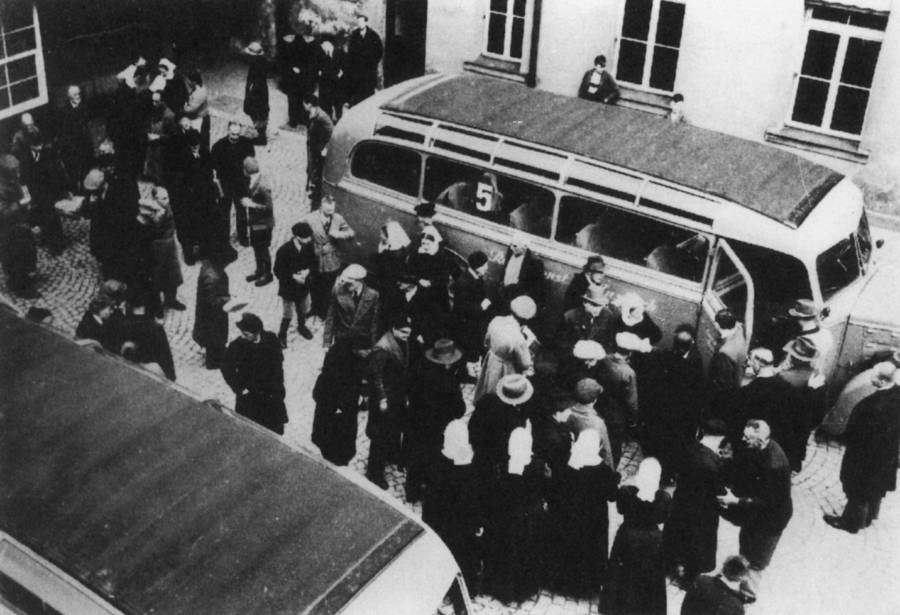
Wikimedia CommonsDisabled people are relocated as part of the Aktion T4 program. 1941.
Or, it was, until news of the Aktion T4 program broke in 1940. Revelations about what was going on in the killing centers were bound to come out eventually, if only because the families of the victims all had nearly identical experiences: their child or disabled adult would be carted away by a charitable service working with the state, they’d get a few letters if the patient was able to write, and then there’d be a notification that their loved one had succumbed to measles and their body had been cremated as a health precaution.
No inquiries could be made and no visits were possible. It was inevitable that some families would eventually hear the same story from others and put two and two together, especially when the routine was the same across all six facilities.
Once people got wise, churches led the resistance to the Aktion T4 program by raising awareness, speaking out, and even distributing leaflets that brought the matter to the attention of many Germans for the first time.
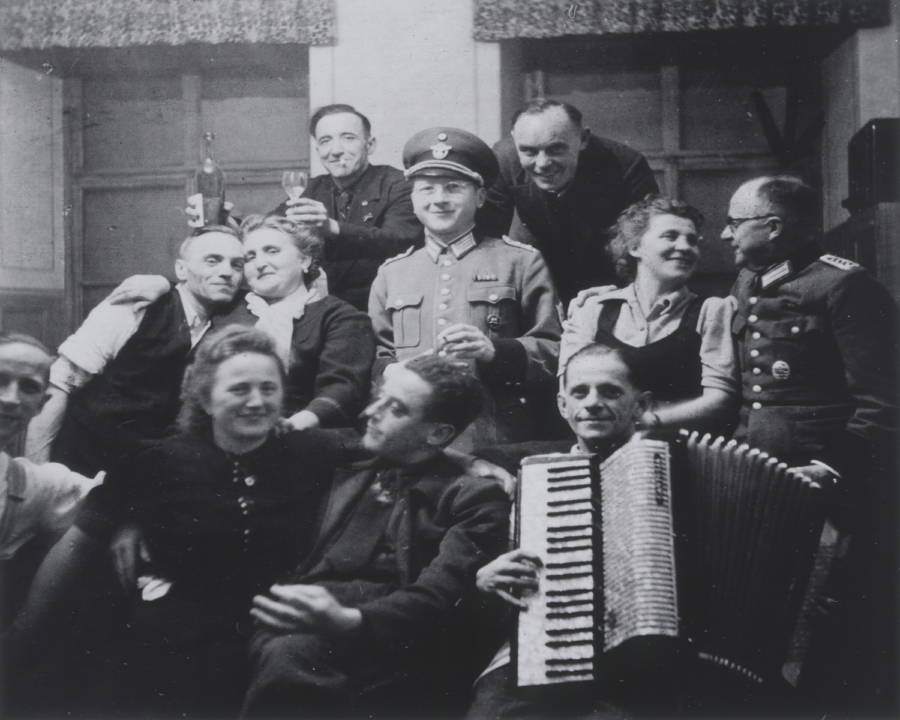
United States Holocaust Memorial Museum, courtesy of National Archives and Records Administration, College ParkAktion T4 program personnel enjoy a social gathering during some time off. Circa 1940-1942.
The foreign press was even harsher on the Aktion T4 program.
In his 1941 book The Berlin Diary, American Journalist William L. Shirer described Aktion T4 in a passage that began: “A word about a matter the Nazis would kill me over, if they knew I knew about it.”
When the book was published and these words made it out of Germany, other American and British journalists did what they could but wartime secrecy largely kept the outside world in the dark.
The End Of The Aktion T4 Program

United States Holocaust Memorial Museum, courtesy of National Archives and Records Administration, College ParkMass graves of victims of the Aktion T4 program killed at the Hadamar Institute. April 15, 1945.
As a sop to the remaining pockets of resistance (and no doubt as a result of the fact that he had other things on his mind), Hitler finally agreed to halt the program in August 1941, after somewhere between 90,000 and 300,000 people had been killed. Virtually all of the victims were German or Austrian, and nearly half of them had been children.
But even after the ostensible halt of the killings in 1941, they eventually resumed and were simply folded into the larger program of the nascent Holocaust, making the true toll even harder to ever truly know.
This is only fitting considering that the ideologies, techniques, machinery, and personnel used in the Aktion T4 program would prove invaluable at the concentration camps of the Holocaust. In the words of the United States Holocaust Memorial and Museum:
The “euthanasia” program represented in many ways a rehearsal for Nazi Germany’s subsequent genocidal policies. The Nazi leadership extended the ideological justification conceived by medical perpetrators for the destruction of the “unfit” to other categories of perceived biological enemies, most notably to Jews and Roma (Gypsies).

Wikimedia CommonsKarl Brandt listens as he’s sentenced to death at the conclusion of his trial in Nuremberg on August 20, 1947
And as was the case with the Holocaust as a whole, only some of the Nazis responsible for the Aktion T4 program ultimately faced justice.
Just after the war, Philipp Bouhler committed suicide after being captured. Meanwhile, the so-called Doctors’ trial of 1946-1947 saw the International Military Tribunal sentence several Nazi doctors to death for their role in the program (among other offenses), including Dr. Brandt.
Dr. Pfannmüller was ultimately convicted for his role in 440 murders in 1951 and was sentenced to five whole years in prison. Later, he successfully appealed to reduce that to four years. He was released in 1955 and died quietly as a free man at his home in Munich in 1961.

Wikimedia Commons
Today, a memorial stands near the former site of the Aktion T4 program’s headquarters in Berlin where Nazi officials organized a mass killing like few the world has ever seen.
After this look at the Nazi’s horrific Aktion T4 program, discover how dangerous drugs like Pervitin fueled the Nazis’ rise and fall. Then, read the horrifying tales of infamous Nazi doctor Josef Mengele.
How Drugs Like Pervitin And Cocaine Fueled The Nazis’ Rise And Fall
By John Kuroski | Edited By Katie Serena
Published July 9, 2022
Despite Adolf Hitler’s anti-drug rhetoric, Nazi Germany used a little courage pill called Pervitin to take Europe by storm. It turns out it was pure methamphetamine.
Just before meeting with Benito Mussolini in the summer of 1943, Adolf Hitler was feeling seriously ill.
Still, he couldn’t ditch an Axis power meeting, and so Hitler’s personal physician injected the Führer with a drug called Eukodal — think oxycodone combined with cocaine — to perk him up.
The physician took a significant risk in doing so. After all, Hitler was prone to latching on to addictive substances and refusing to let go. But in this case, the injection seemed warranted: Hitler was doubled over with violent, spastic constipation, refusing to speak to anyone.
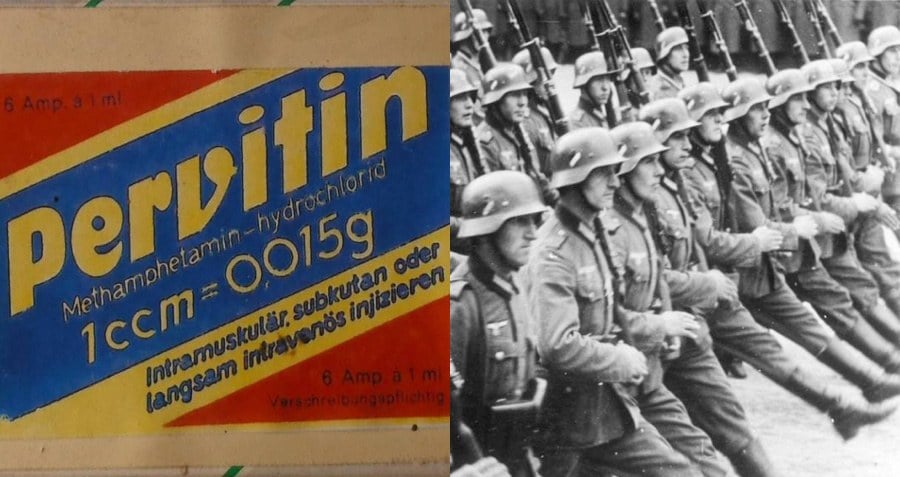
Wikimedia Commons, German Federal Archives
Immediately after the first injection and despite his doctor’s wishes, a revived Hitler ordered another injection. Hitler then left for the meeting with the gusto of a soldier half his age.
At the meeting with Mussolini, Hitler reportedly spoke for several hours without stopping. The Italian dictator — who sat massaging his own back, dabbing his forehead with a handkerchief, and sighing — had hoped to convince Hitler to let Italy drop out of the war. He never got the chance.
This was but one episode amid Hitler’s almost daily drug use, which included barbiturates, bull semen, testosterone, opiates, and stimulants such as Pervitin, a “courage” pill made out of methamphetamine.
Norman Ohler’s recently-published book, Blitzed: Drugs in Nazi Germany, tackles the role that drugs played in the Third Reich — and it’s overwhelming.
Nazi Drugs: The Poison In Germany’s Veins
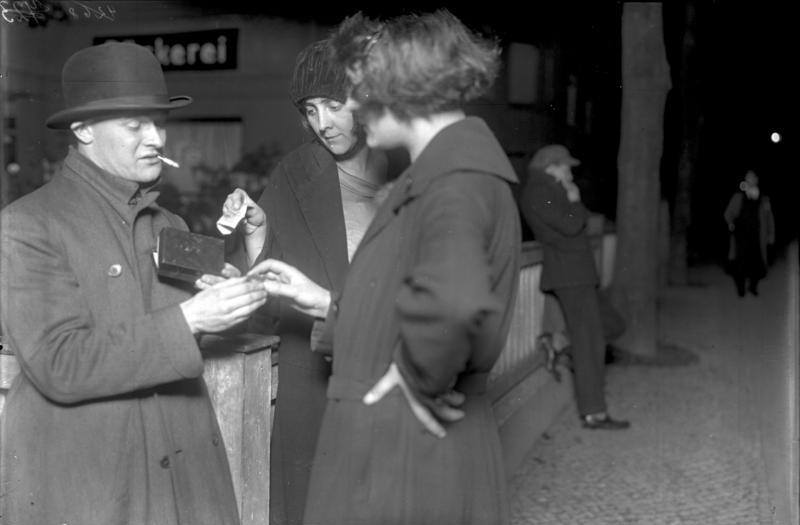
Georg Pahl/German Federal ArchivesDrug users purchase cocaine on the streets of Berlin in 1924.
Remove ads and support us with a membership
Although he would later usher the Third Reich into a period of heavy drug usage, Adolf Hitler first used a radical anti-drug platform to seize control of the state.
This platform was part and parcel of a broader campaign built upon anti-establishment rhetoric. At that time, the establishment was the Weimar Republic, the unofficial name that Hitler had coined for the German regime that ruled between 1919 and 1933 and that had grown economically dependent on pharmaceuticals — specifically cocaine and heroin.
To give you an idea of this dependency’s scale, the year before the victors of World War I compelled the republic to sign the treaty of the International Opium Convention in 1929, Berlin alone produced 200 tons of opiates.
In fact, Germany was responsible for 40 percent of global morphine production between 1925 and 1930 (cocaine was a similar story), according to Ohler. All in all, with their economy largely wrecked by World War I, the Weimar Republic had become the world’s drug dealer.

PinterestA 1927 German film poster warns of the dangers of cocaine, opium, and morphine.
Adolf Hitler wasn’t a fan of it. A teetotaler who wouldn’t even drink coffee because of the caffeine, Hitler avoided all drugs. Famously, he reportedly never smoked again after throwing a pack of cigarettes into a river at the end of World War I.
When the Nazis took control of Germany in 1933, they began extending Hitler’s no-poison-philosophy to the country as a whole. The Nazis had their work cut out for them, however. Describing the state of the country at the time of Hitler’s rise, German author Klaus Mann wrote:
“Berlin night life, oh boy, oh boy, the world has never seen the like! We used to have a great army, now we’ve got great perversities!”
So the Nazis did what they did best, and combined their anti-drug efforts with their signature practice of accusing those they didn’t like — particularly those of Jewish descent — of being the ones stabbing Germany in the back.
Nazis thus used propaganda to associate addicts with these subjugated groups, coupled with harsh laws — one of the first laws the Reichstag passed in 1933 allowed the imprisonment of addicts for up to two years, extendable indefinitely — and new secret police divisions to bolster their anti-drug efforts.

Ernst Hiemer/Norman Ohler.An illustration from The Poisonous Mushroom as presented in Blitzed: Drugs in Nazi Germany.
The Nazis also threw medical confidentiality out the window and required doctors to refer any person with a narcotics prescription lasting longer than two weeks to the state. The Nazis then cut off those who passed the ethnicity test cold turkey and imprisoned those who did not, sending them to concentration camps. Repeat offenders suffered the same fate.
On the surface, this large-scale shift away from rampant drug dependency looked like a Nazi-induced miracle. Of course, it only lasted until Hitler had his first taste of Pervitin.
Hitler’s Descent Into Hypocrisy
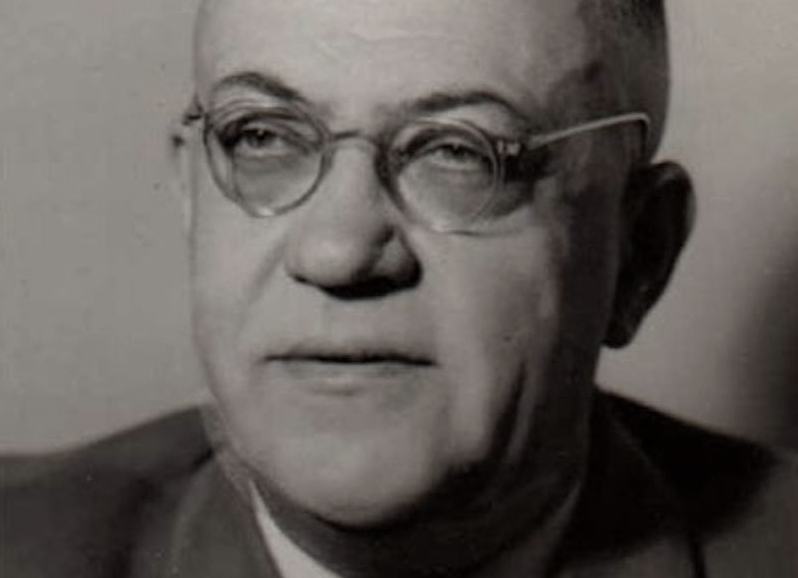
In 1936, the official photographer of the Nazi Party, Heinrich Hoffmann, came down with an extreme case of gonorrhea. He was a friend of Hitler’s — he had introduced Hitler to his lover, Eva Braun, who had been Hoffmann’s assistant — and so a call went out for the best, most discreet doctor that Germany had: Theodor Morell. Known for his vitamin shots and energy injections, Morell was the “it” doctor for Berlin’s celebrities.
Morell successfully treated Hoffmann, who was so grateful for the relief that he invited Morell to his home for a meal. It was a fortuitous choice. Hitler decided to drop in that night and mentioned in passing that severe stomach and intestinal pains had tormented him for years. Not one to miss a chance to climb up the ranks, Morell offered Hitler a consultation.
Hitler took him up on his offer, later telling Morell in private that he was in so much pain that he could barely move, let alone lead a struggling country in the midst of upheaval. Morell lit up: he knew just the thing.
He prescribed Hitler a capsule full of healthy intestinal bacteria called Mutaflor, an experimental treatment at the time and one that is still used today. This helped Hitler’s stomach pain and increased flatulence issues enough that he appointed Morell as his personal physician.
From then on out, Morell would seldom leave Hitler’s vicinity, eventually injecting Hitler with everything from glucose solutions to vitamins multiple times a day, all to relieve Hitler’s chronic pain.
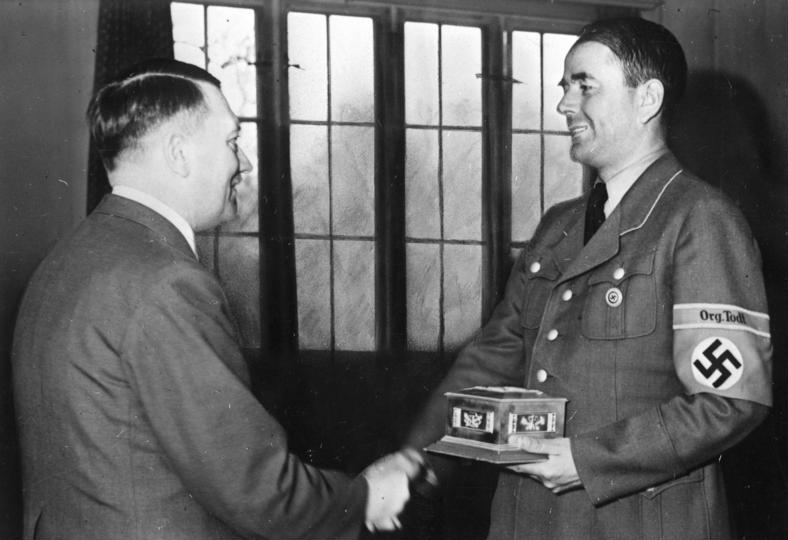
Adolf Hitler meets with Albert Speer in 1943.
Despite these early successes, some evidence suggests that Morell grew careless after becoming Hitler’s favorite, a claim made by leading Nazi Albert Speer, Minister of Armaments and War Production. He would later write in his autobiography, dismissing Morell as a quack:
“In 1936, when my circulation and stomach rebelled . . . I called at Morell’s private office. After a superficial examination, Morell prescribed for me his intestinal bacteria, dextrose, vitamins and hormone tablets. For safety’s sake I afterward had a thorough examination by Professor von Bergmann, the specialist in internal medicine at Berlin University.
I was not suffering from any organic trouble, he concluded, but only from nervous symptoms caused by overwork. I slowed down my pace as best I could and the symptoms abated. To avoid offending Hitler I pretended that I was carefully following Morell’s instructions, and since my health improved, I became for a time Morell’s showpiece.”
Moreover, some allege that Morell was downright deceitful.
For one, Ernst-Günther Schenck, a physician in the SS who would later write a book theorizing that Hitler had Parkinson’s disease, acquired one of the vitamin packets that Morell injected into Hitler every morning and had a laboratory test it. It turns out that Morell was injecting Hitler with methamphetamine, which helps explain why Hitler couldn’t get enough.
But Pervitin wasn’t the only drug Morell treated Hitler with: the physician would offer the Führer an ever-increasing laundry list of drugs, including caffeine, cocaine (for sore throat), and morphine — all the drugs that Hitler had railed against for years before the war. The most significant of these drugs was Pervitin, a methamphetamine.
Substances administered to Hitler
Morell kept a medical diary of the drugs, tonics, vitamins and other substances he administered to Hitler, usually by injection (up to 20 times per day) or in pill form. Most were commercial preparations, some were Morell’s own mixes. Since some of these compounds are considered toxic, historians have speculated that Morell inadvertently contributed to Hitler’s deteriorating health. The fragmentary list (below) of some 74 substances (in 28 different mixtures)[15] administered to Hitler include psychoactive drugs such as heroin as well as commercial poisons. Among the compounds, in alphabetical order, were:[8]
- Brom-Nervacit: Bromide, sodium diethylbarbiturate, Pyramidon, since August 1941 a spoonful of this tranquilizer almost every night, to counteract stimulation from methamphetamine and to allow sleep.[8]
- Cardiazol and Coramine: since 1941 for leg oedema.
- Chineurin: Quinine-containing preparation for common colds and flu.
- Cocaine and adrenaline (via eye drops).[16]
- Coramine: Nikethamide injected when unduly sedated with barbiturates. In addition, Morell would use Coramine as part of an all-purpose „tonic“.
- Cortiron: Desoxycorticosterone acetate IM injections for muscle weaknesses, influencing carbon hydrate metabolism.
- Doktor Koster’s Antigaspills: 2–4 pills before every meal, for a total of 8–16 tablets a day,[17]since 1936 Belladonna extractum and Strychnos nux vomica in high doses, for meteorism.[18][19]
- Enbasin: Sulfonamide, intragluteal 5 cc, for diverse infections.
- Euflat: Bile extract, Radix Angelica, Aloes, papaverine, caffeine, pancreatine, Fel tauri – pills, for meteorism, and treatment of digestion disorders.
- Eukodal: heavy doses oxycodone, for intestinal spasms, painkiller.[20]
- Eupaverin: Moxaverine, an isoquinolinederivative for intestinal spasms and colics.
- Glucose: 1938 until 1940 every third day Glucose injections 5 and 10%, for potentiation of the Strophanthus effect.
- Glyconorm: Metformin,[8] metabolism enzymes (cozymase I and II), amino acids, vitamins – injectable solution as a strengthener tonic.
- Homatropin: Homatropine HBr 0.1 g, NaCl 0.08 g; Distilled water added 10 mL. Eye drops for right eye problems.
- Intelan: Twice a day Vitamins A, D3 and B12 – tablets as a strengthener, tonic.
- Camomilla Officinale: Chamomile – intestinal enemata, on the patient’s personal request.
- Luitzym: After each meal, enzymes with cellulase, hemicellulases, amylase, and proteases, for intestinal problems, meteorism.
- Mutaflor: Emulsion of Escherichia coli-strains – enteric coated tablets for improvement of intestinal flora. They were prescribed to Hitler for flatulence in 1936, the first unorthodox drug treatment from Morell; bacteria cultured from human feces, see: „E. coli„.[21]
- Omnadin: Mixture of protein compounds, biliary lipids and animal fat, taken at the onset of infections (together with Vitamultin).
- Optalidon: Caffeine, propyphenazone – tablets at the beginning of infections (together with Vitamultin).
- Orchikrin: An extract of bovine testosterone, pituitary gland, and glycerophosphate, as a tonic, strengthener. Marketed also as an aphrodisiac.[19]
- Penicilline-Hamma: Penicillin – powder topical antibiotic. After the attempted assassination of July 20, 1944 to treat his right arm.
- Pervitin: methamphetamine injections for mental depression and fatigue.[8][19]
- Progynon B-Oleosum: Estradiol valerate, benzoic ester of follicle hormone, for improvement of the circulation in the gastric mucosa.
- Prostacrinum: Two ampoules every second day for a short period in ’43, extract of seminal vesicles and prostate – injected IM for mental depression.[19]
- Prostophanta: Strophantine 0.3 mg, glucose, vitamin B, nicotinic acid – IM heart glycoside, strengthener.
- Septoid: intravenous injections of 10 cc of 3% iodine (in potassium iodide form) with 10 cc of 20% glucose, two or three times a day, to improve heart’s condition and the altered Second Sound.[1]
- Strophantin: 1941–44 – cycle of 2 weeks of homeopathic Strophanthus gratus glycoside 0.2 mg per day for coronary sclerosis.
- Sympatol: oxedrine tartrate since 1942, 10 drops daily for increasing the cardiac minute volume.
- Testoviron: Testosterone propionate as a tonic, strengthener.
- Tonophosphan: 1942–1944, phosphoric preparation – SC tonic, strengthener.
- Ultraseptyl: Sulfonamide for respiratory infections.
- Veritol: since March 1944 hydroxyphenyl-2-methylamino-propane – eyedrops for left eye treatment.
- Vitamultin-Calcium: Caffeine, vitamins.
An almost complete listing of the drugs used by Morell, wrote historian Hugh Trevor-Roper, was compiled after the war from his own meticulous daily records and unlikely to have been exaggerated.[15]Interestingly, Morrell was trained as a general practitioner. However, his specialty was training neither in dermatology nor in venereology, but in obstetrics and gynaecology. Despite his lack of training, Morrell did treat Hitler (who had an obsessive fear of VD) with Arsenobenzol, designated „606“, salvarsan, neosalvarsan with bismuth and iodine salts.[22]
Neosalvarsan is a synthetic chemotherapeutic that is an organoarsenic compound. It became available in 1912 and superseded the more toxic and less water-soluble salvarsan as an effective treatment for syphilis. Because both of these arsenicals carried considerable risk of side effects, they were replaced for this indication by penicillin in the 1940s.
Both salvarsan and neosalvarsan were developed in the laboratory of Paul Ehrlich in Frankfurt, Germany. Their discoveries were the result of the first organized team effort to optimize the biological activity of a lead compound through systematic chemical modifications.[1] This scheme is the basis for most modern pharmaceutical research. Both salvarsan and neosalvarsan are prodrugs – that is, they are metabolised into the active drug in the body.
Although, like salvarsan, it was originally believed to contain an arsenic-arsenic double bond, this is now known to be incorrect for Salvarsan.[2] Presumably, neosalvarsan also exists as a mixture of differently sized rings with arsenic-arsenic single bonds.
Paul Ehrlich and the Salvarsan Wars
When Paul Ehrlich developed the first clinically tested syphilis treatment in 1910, he sparked hope and controversy.
SPRING 2010

WELLCOME LIBRARY, LONDON
Before 1910 the only treatment available for syphilis was about as terrible as the disease itself: the liquid metal mercury, which could cause death or organ damage. So when the first clinically tested syphilis agent debuted 100 years ago, it quickly became the most prescribed drug in the world. “People who…have shown no evidences whatever of disease…have been begging for a dose of ‘606,’ just to make ‘perfectly sure,’ ” one U.S. physician reported.
Behind 606 was the German physician Paul Ehrlich, who had shared a Nobel Prize for his work in immunology two years before. Yet little did this kindly scientist know that he would soon be embroiled in controversy.
Ehrlich’s assistant, Japanese bacteriologist Sahachiro Hata, had found a way to infect rabbits with the syphilis-causing bacterium Treponema pallidum, and, as possible cures, the duo tested arsenical compounds that Ehrlich and chemist Alfred Bertheim had developed. When Hata injected the 606th substance, arsphenamine, intravenously into live animals, it killed the syphilis bacterium—but not the rabbits. By September 1910, 606 was on the market under the brand name Salvarsan.
The drug put into action two ideas that Ehrlich had conceived earlier: chemotherapy, a term he coined for “curing organisms infected by certain parasites in such a way that the parasites are exterminated within the living organism…by the use of substances which have had their origin in the chemist’s retort”; and “the magic bullet,” meaning drugs that home in on disease-causing microorganisms.
This magic bullet was difficult to administer, however, and the side effects—rashes, liver damage, and risks of life and limb, literally—prompted some physicians to denounce 606. In what historians have dubbed the Salvarsan Wars, Ehrlich and Hata were vilified for profiting from what their detractors called a dangerous drug, even claiming that Frankfurt Hospital had forced prostitutes to undergo Salvarsan treatments. Ehrlich was accused of criminal negligence, though he was eventually exonerated.
In 1912, Ehrlich replaced Salvarsan with a less toxic, easier-to-administer derivative—Neosalvarsan—which became the standard treatment for syphilis until the late 1940s, when penicillin was substituted as a safer alternative. Salvarsan’s legacy would last even longer, opening the field of synthetic drugs and inspiring other scientists to search for magic bullets.
Ehrlich wouldn’t live to see the extent of his influence. Already in fragile health from an earlier bout with tuberculosis, exhausted from his Salvarsan exploits and distraught because of the First World War, he died in 1915.

Stopping Seizures
In 1857, Sir Charles Locock first prescribed bromide, the first effective medication for epilepsy.
A Potent History
A timeline of pivotal testosterone therapy events through history.
Massachusetts General: A Hospital for Boston
The city’s first hospital was founded to treat the poor—and serve as a teaching locale for Harvard Medical School.
// WHAT’S YOUR TAKE?
E-mail the Editor to comment on a story—or offer suggestions for future topics.
References
- ^ Strebhardt K, Ullrich A (May 2008). „Paul Ehrlich’s magic bullet concept: 100 years of progress“. Nat. Rev. Cancer. 8 (6): 473–480. doi:10.1038/nrc2394. PMID 18469827. S2CID 30063909.
- ^ Lloyd, Nicholas C.; Morgan, Hugh W.; Nicholson, Brian K.; Ronimus, Ron S. (2005). „The Composition of Ehrlich’s Salvarsan: Resolution of a Century-Old Debate“ (PDF). Angewandte Chemie International Edition. 44(6): 941–944. doi:10.1002/anie.200461471. hdl:10289/207. ISSN 1521-3773. PMID 15624113.
David, Kirby (2013), „Censoring Science in 1930s and 1940s Hollywood Cinema“, in Nelson, Donna J.; Grazier, Robert; Paglia, Jaime; Perkowitz, Sidney (eds.), Hollywood Chemistry: When Science Met Entertainment, American Chemical Society, pp. 229–240, ISBN 978-0-8412-2824-5
Hinterlasse einen Kommentar